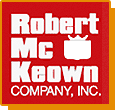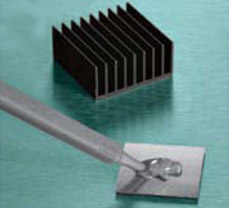The SS3500 product family is comprised of conductive fabric wrapped around open cell foam. This wrap around technology grounds the gasket from point to point, ultimately eliminating an EMI/EMC gap.
SS3500 typically requires less then 1lb/in (0.175/ mm) closure force, making it effective for low closure force applications. SS3500 takes less than 15% compression set. This is less than most other FOF’s on the market resulting in reliable/ repeatable shielding performance. SS3500 is an excellent alternative shielding solution to traditional spring finger type products.
The SS3500 product family is one of the most versatile EMI fof products offered to the market. Depending on mechanical and shielding requirements, the SS3500 can be made with different conductive jackets. Nickel-plated taffeta, Nickel-plated rip-stop polyester, halogen free nickel-plated rip-stop, etc. New geometric profiles are designed and released to the market on a regular basis. Profiles are engineered to optimize mechanical form fit and function while optimizing electrical performance. This technical data sheet will address the most common type FOF. Chomerics has to offer to market. Contact Chomerics for any other special design requirements and an updated profile list.
Product Features:
Typical Applications:
PSA Tape Backing |
N/A Halogen Green Rip Stop, No PSA |
Profile Number |
N/A 3175 |
Height |
N/A 0.374 in9.5 mm |
Width |
N/A 0.500 in12.7 mm |
Test Method Shielding Effectiveness |
N/A CHO-TM-TP08 |
Shielding Effectiveness at 50 MHz to 10 GHz |
N/A > 100 dB |
Test Method Compression Deflection |
N/A ASTM C165 |
| 35% Compression Deflection1 | N/A < 1 lb/in< 0.175 N/mm |
Test Method Compression Set |
N/A ASTM D3574 |
Compression Set |
N/A < 15 % |
Operating Temperature Range |
N/A –40 to 70 ºC |
Test Method Acrylic Adhesive Peel Strength |
N/A ASTM D1000 |
Acrylic Adhesive Peel Strength Min. |
N/A 4 lb/in0.7 N/mm |
Recommended % Deflection |
N/A 30 to 50 % |
Test Method Flamability |
N/A UL 94 |
Flamability |
N/A V-0 |
Product Forms |
N/A SQ, REC., D, C, P, L and Custom |
Typical Applications |
N/A Doors, Panels, Seams, Faceplates, Ground Pads |
Method of Manufacture |
N/A Wrapped foam |
Jacket Material |
N/A Ni/Cu Plated Taffeta Polyester |
Foam |
N/A Standard performance Urethane Foam |
| Attachment Method (PSA)2 | N/A Non conductive, closed cell, acrylic PSA |
Baseline EMI Shielding |
N/A 80 dB |
Shielding Effectiveness After Cycling |
N/A Good |
Softness |
N/A Best |
Compression Set ASTM D395 - Method B |
N/A 70 ºC - 25 % |
RoHS Compliant |
N/A Yes |
- 1 0.125 x 0.375 in gasket
- 2 PSA typically covers less then 50 % of contact area. Upon compression the conductive fabric will make direct contact to the interface.
Robert McKeown offers a variety of adhesive and sealant products for a wide range of commercial and industrial applications. Our silicone epoxy adhesives and sealants, in particular, are ideal for applications such as:
FEATURES AND USES OF ELECTRONICS SEALANTS AND ADHESIVES
Providing ultimate reliability and longevity, our electronics adhesives and sealants can be used to form bonds to many different surfaces and substrates, including:
- Ceramics
- Metals
- Glass
- Filled plastics
These specialized solutions eliminate the need for mechanical fastening and clamping while allowing for optimal ease of processing. Reliable and efficient in temperatures ranging from -45 °C to 200 °C, our electronics adhesives and sealants provide excellent dielectric insulation.
Most silicone formulations are solventless, eliminating the need for special storage, ventilation, or handling. And because many of our electronics adhesives and solvents are reworkable, they offer great flexibility and allow for easier module repair.
Electronics adhesives and sealants are frequently used in: automotive, communications, industrial, and energy industries, as well as consumer devices.
Extremely versatile, these adhesives can be used for:
- Sealing lids and housing grooves
- Cushioning or stabilizing fragile components
- Affixing components such as capacitors and coils to circuit boards
- Adhering module lids and baseplates
- Gasketing
SILICONE ADHESIVES
One of the most popular types of electronics adhesives, silicone adhesives provide excellent flexibility and high heat resistance, making them ideal for electrical, automotive, aerospace, and construction industries. There are several varieties of silicone adhesives available, including:
- Two-component systems that require a curing agent
- One-component systems that cure through air moisture
- UV or EB radiation curing adhesives
- Pressure-sensitive versions that adhere to surfaces with little pressure
RTV sealants (room-temperature vulcanizing) begin to cure as soon as they’re exposed to moisture in the air, so they must be used quickly. Pressure-sensitive sealants offer a permanent tackiness. UV- or radiation-cured sealants, on the other hand, require UV light to cure, while thermoset silicone sealants require heat to cure. Although not as strong as other sealants or adhesives, electrical silicone sealants remain flexible even when fully dried or cured. Various types of silicone sealants serve as ideal solutions for high-heat applications like engine gaskets.
In electronics fabrication, silicone adhesive sealants are often used for fixing parts on circuit boards, LCD module assembly, general sealing, and component protection. Specific formulations differ depending on intended use and can be customized to allow for enhanced thermal conductivity, superior protection of metal electrodes, and faster cure times. These sealants are available in chemical-, heat-, mildew-, and oil-resistant formulations to meet a wide range of application needs.
Industrial silicone epoxy is used for:
- General-purpose fixture sealing of tubs
- Windows, ductwork
- Gaskets
- General-purpose bonding
- Sealing
THERMAL SEALANTS
High temperatures often present problems for conventional adhesive materials and can affect printed circuit boards and assemblies. At Robert McKeown, we offer the highest-level special adhesive grades of thermal sealants, which allow for enhanced thermal conductivity. Both low-viscosity liquids and non-slump formations are available in two-cure chemistries.
We also offer one-part moisture-cure grades, which use room-temperature processing to cut back on equipment needs. After cure, the materials form strong but flexible bonds, which protect from mechanical stress and vibration. Both one- and two-part heat-cure solutions accelerate processing and support high throughput production.
Heat resistant silicone adhesives are extremely versatile materials and dispense easily at room temperature, but can also cure quickly at any thickness level at temperatures as low as 90°C. Efficacy and functionality are improved when higher temperatures accelerate cure times.
CHEMICAL RESISTANT ADHESIVES
Chemical resistant silicone adhesives are commonly used in:
- Chemical processing plants
- Chemical piping and tanks
- Medical devices
These adhesives can reliably protect against a wide range of chemicals and harsh materials, including acid, alcohol, and fuel. Depending on specific application requirements, they can also provide resistance against solvents, bases, sterilization, and water.
EPOXY BASED ADHESIVES
Epoxy based adhesives are created by mixing a resin and a hardener. Curing is initiated when the resin is mixed with a certain catalyst. The covalent bonds resulting from this combination determine the rigidity and strength of the epoxy sealant.
Epoxy adhesives can reliably adhere to a variety of materials and are ideal for applications demanding chemical resistance, high strength, and low stress. Thermally conductive, microelectronic-grade, general-purpose, high-temperature and chemical resistant epoxy adhesives are available as both one- and two-part solutions. Epoxy adhesive and sealants allow for room temperature, thermal, or UV-curing capabilities.


